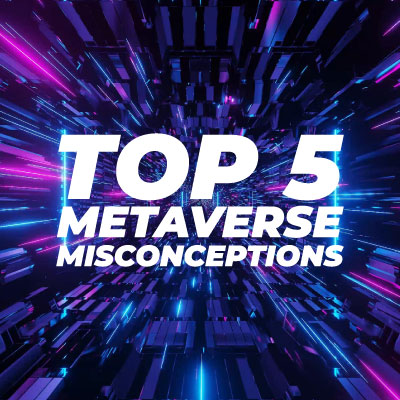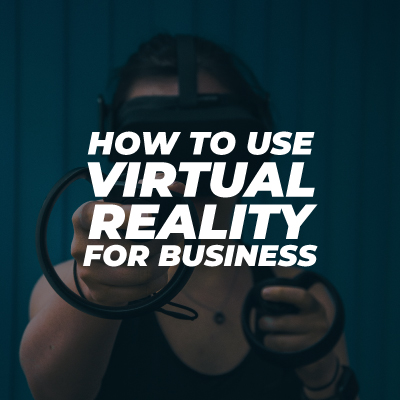

The number 1 winner: augmented reality vs mixed reality
As technology advances, so does the way we experience the world around us. Augmented reality (AR) and mixed reality (MR) are two examples of how technology is changing the way we perceive our environment. Augmented Reality vs Mixed Reality are similar technologies, but there are important differences between the two technologies. In this blog post, we will discuss the differences between augmented reality and mixed reality, and their respective benefits and drawbacks.
What is the difference between MR and AR?
What is Augmented Reality?
Augmented reality is a technology that overlays digital information in the real world. AR can be experienced through a smartphone or tablet, and the user sees the real world with digital information overlaid on top. AR is often used for gaming and entertainment purposes, but it is also used in a variety of other industries, including healthcare, education, and retail.
Benefits of Augmented Reality:
Interactive Learning
AR allows for a more interactive and immersive learning experience. For example, students can use AR to explore the human body in 3D.
Enhanced Shopping Experience
AR allows customers to try on clothes or see how furniture will look in their homes before making a purchase.
Entertainment
AR games and apps provide an entertaining and engaging experience for users.
Increased Safety
AR can be used to provide workers with information about hazardous materials or environments, helping to increase safety in the workplace.
What is Mixed Reality?
Mixed reality is a technology that combines the real world with digital objects, creating a seamless integration of the two. MR can be experienced through devices such as head-mounted displays (HMDs) and smart glasses. MR is often used in gaming and entertainment, but it also has applications in healthcare, manufacturing, and other industries.
Benefits of Mixed Reality:
Immersive Experience
MR fully immerses users in a digital environment, creating a more immersive experience than AR.
Greater Interaction
MR allows for greater interaction with the digital environment, as the user can manipulate and interact with digital objects as if they were real.
Increased Efficiency
MR can be used in manufacturing and other industries to increase efficiency and productivity.
Greater Mobility
MR can be experienced through devices such as HMDs and smart glasses, allowing for greater mobility and freedom of movement.
What is virtual reality (VR)?
We have looked at augmented reality vs mixed reality but what is Virtual Reality? Virtual reality (VR) is a technology that creates a simulated environment or experience. It is achieved by using a combination of hardware, such as headsets, and software that generates images, sounds, and other sensory stimuli that simulate a real or imagined environment. VR allows users to experience and interact with a computer-generated environment as if it were real.
In VR, the user wears a headset that has a display screen, and often, built-in headphones. The headset tracks the user’s movements and displays a 360-degree view of the virtual environment. The user can interact with the environment through the use of controllers, sensors, or even hand gestures. The virtual environment can be a completely new world, a recreation of a real-world environment, or a combination of both.
VR technology has been used for a wide range of applications, from gaming and entertainment to education, healthcare, and military training. In gaming and entertainment, VR allows for a more immersive experience where the user can feel as if they are in a game or movie. In education, VR can be used to create interactive and immersive learning experiences that are more engaging than traditional methods. In healthcare, VR can be used for therapy and pain management, as well as training medical professionals. In military training, VR can be used to simulate combat situations and train soldiers in a safe environment.
Overall, virtual reality technology has the potential to create new and exciting experiences that were once only possible in our imagination. As technology continues to evolve, it has the potential to impact many aspects of our lives, from entertainment and education to healthcare and beyond.
How does virtual reality differ from augmented reality?
Virtual reality (VR) and augmented reality (AR) are two related but distinct technologies.
VR is a technology that creates a completely immersive virtual environment, typically using a headset that covers the user’s eyes and ears. The user is fully immersed in the virtual environment, which can be a completely different world, a simulation of a real-world environment, or a combination of both. The user can interact with the environment through the use of controllers, sensors, or even hand gestures. In VR, the real world is completely blocked out, and the user only experiences the virtual environment.
On the other hand, AR is a technology that overlays digital information in the real world, typically through a smartphone or tablet. AR enhances the user’s view of the real world by adding digital objects, such as text, images, or 3D models, to the user’s field of view. AR does not block out the real world, but instead, adds to it. In AR, the user still experiences the real world, but with added digital information.
The key difference between VR and AR is the level of immersion and the degree to which the virtual environment is integrated with the real world. VR completely immerses the user in a virtual environment and blocks out the real world, while AR overlays digital information onto the real world, enhancing the user’s view of the real world. Both VR and AR have unique advantages and applications, and the choice between the two will depend on the specific use case and the needs of the user.
What is the difference between VR and MR?
Mixed reality (MR) is a technology that combines elements of both virtual reality (VR) and augmented reality (AR). MR is also sometimes referred to as hybrid reality or extended reality (XR).
While VR immerses the user in a completely virtual environment and AR overlays digital information onto the real world, MR blends the two in a seamless way. MR allows digital objects to interact with the real world and vice versa, creating a mixed environment where virtual objects appear to exist in the real world and can interact with real-world objects.
One way to think of the difference between VR and MR is to imagine a virtual world that is overlaid onto the real world. In VR, the user is completely immersed in the virtual world and cannot see the real world. In MR, the user can see both the virtual world and the real world simultaneously and can interact with both.
For example, in MR, a user might wear a headset that projects a virtual object, such as a virtual ball, into the real world. The user could then interact with the virtual ball using real-world gestures and movements, such as throwing the ball or bouncing it off a real-world surface.
Overall, the key difference between VR and MR is the level of integration with the real world. VR completely blocks out the real world, while MR blends the virtual and real worlds in a seamless way, allowing for interactive and immersive experiences that bridge the two.
What are the best use cases for mixed reality?
The debate of augmented reality vs mixed reality is ever-changing. It all comes down to the business needs and what you need the technology to do. So of the use case of MR are:
Training and Education
MR can be used to create realistic training environments that simulate real-world scenarios. For example, in healthcare, MR can be used to train medical professionals to perform procedures or surgeries. In education, MR can be used to create immersive and interactive learning experiences that help students visualize complex concepts.
Architecture and design
MR can be used to visualize building designs in 3D and allow architects and designers to see how a building or space will look before it is built. MR can also be used to create virtual walkthroughs of buildings or spaces, allowing clients and stakeholders to experience them before they are built.
Manufacturing and assembly
MR can be used to assist in the assembly of complex products, such as aircraft or cars. MR can provide step-by-step instructions and visual cues to help workers perform tasks more efficiently and accurately.
Entertainment and gaming
MR can be used to create immersive gaming experiences that blend virtual and real-world elements. For example, MR can allow gamers to interact with virtual objects in the real world or allow them to play games in a real-world environment.
Retail and e-commerce
MR can be used to provide virtual try-on experiences for clothing and accessories, allowing customers to see how they look before making a purchase. MR can also be used to create interactive product catalogues or virtual showrooms.
Maintenance and repair
MR can be used to assist in the maintenance and repair of complex machinery or equipment. MR can provide real-time visualizations and instructions to help workers identify and fix issues more efficiently.
Overall, mixed reality has the potential to revolutionize many different industries by providing immersive and interactive experiences that bridge the virtual and real worlds.
What are the best use cases for augmented reality?
When looking at augmented reality vs mixed reality, AR has a wide range of potential use cases across many different industries. Here are some examples of the best use cases for augmented reality:
Marketing and advertising
AR can be used to create interactive and engaging marketing campaigns that allow customers to experience products in new and innovative ways. For example, AR can be used to create virtual try-on experiences for clothing or makeup.
Education
AR can be used to create immersive and interactive learning experiences that help students visualize complex concepts. For example, AR can be used to create virtual field trips or to bring historical events to life.
Real estate
AR can be used to create virtual property tours that allow potential buyers to experience properties in 3D. AR can also be used to overlay information about properties onto real-world views, such as information about nearby amenities or the history of the area.
Retail and e-commerce
AR can be used to provide virtual try-on experiences for products such as furniture or home decor. AR can also be used to create interactive product catalogues or virtual showrooms.
Manufacturing and assembly
AR can be used to assist in the assembly of complex products, such as machinery or equipment. AR can provide step-by-step instructions and visual cues to help workers perform tasks more efficiently and accurately.
Healthcare
AR can be used to create realistic training simulations for medical professionals. AR can also be used to overlay information about a patient’s condition onto their real-world view, providing doctors with real-time information about their patients.
Overall, augmented reality has the potential to revolutionize many different industries by providing interactive and engaging experiences that enhance the real-world view.
Conclusion
In conclusion, while augmented reality vs mixed reality are similar technologies, there are important differences between the two. AR overlays digital information in the real world, while MR integrates digital objects with the real world. AR is often used for gaming and entertainment, while MR has applications in a variety of industries, including healthcare and manufacturing. Both technologies have benefits and drawbacks, and the choice between the two will depend on the specific use case and the needs of the user.



